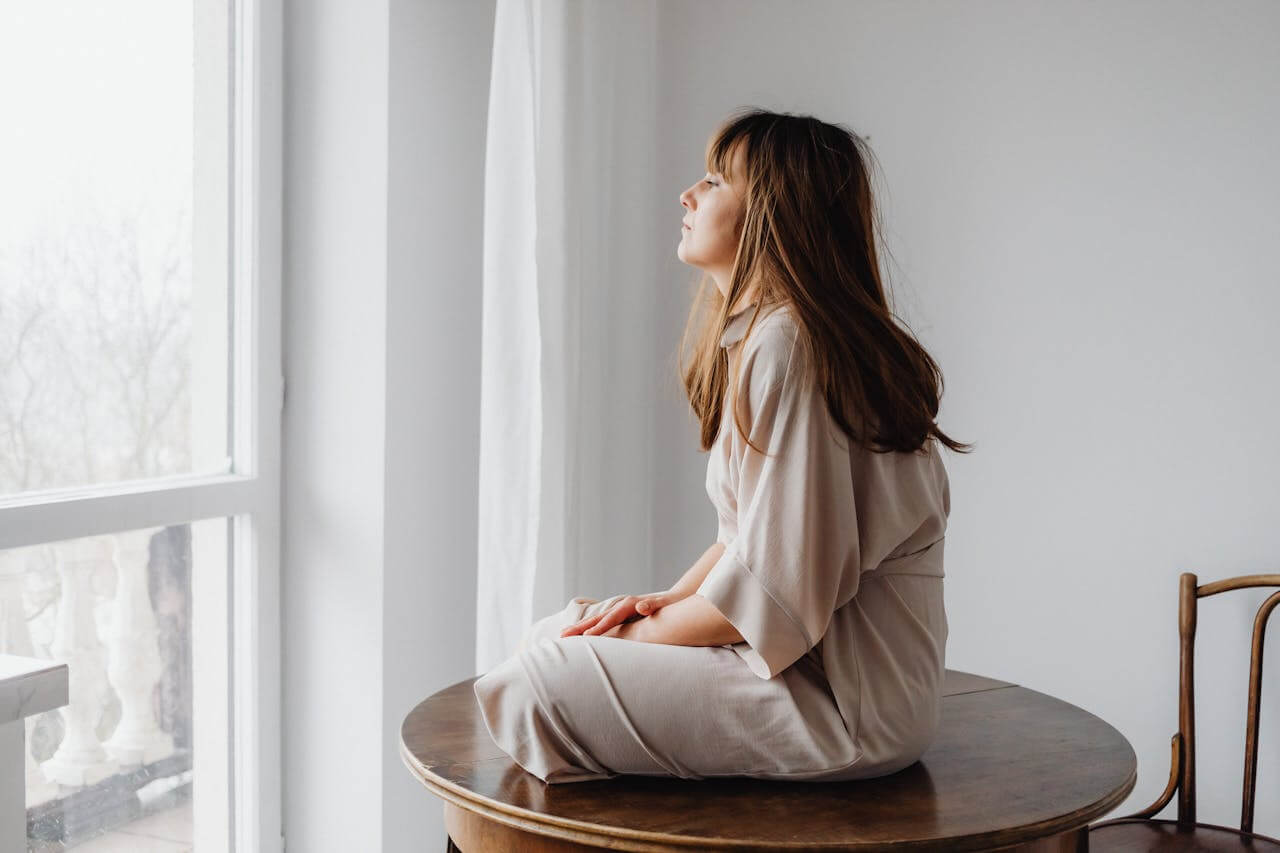Seasonal affective disorder explained
In a Nutshell
Seasonal affective disorder (SAD) is a recognised form of depression that follows a seasonal pattern, usually starting in autumn or winter.
In Australia, SAD may be more common than previously believed, particularly in colder, southern regions.
There are practical, evidence-based ways to manage symptoms, including light therapy, lifestyle support, and professional care.
Seasonal affective disorder or SAD is a type of depression that follows a predictable cycle, typically emerging during autumn or winter, and improving as the seasons shift. While awareness of SAD is growing internationally, it’s often overlooked in Australia, where seasonal changes are milder compared to other parts of the world.
That said, research is beginning to show that it may be more common here than previously thought. Understanding how it shows up, how it's diagnosed, and how it can be managed gives you the chance to take informed steps to support your wellbeing or help someone close to you.
Is it a real disorder?
SAD is considered a legitimate mental health condition. It’s formally recognised in clinical settings as a type of major depressive disorder with a seasonal pattern. The main difference is that its symptoms come and go depending on the time of year.
It was once believed to be rare in Australia, but newer research is challenging that assumption. A 2023 review of Australian studies found that the rates of SAD vary by location. In Hobart, where winters are longer and darker, up to 9% of people reported symptoms consistent with SAD. In contrast, in Melbourne, earlier studies suggested a much lower figure of 0.3%.
These differences likely reflect more than just geography. They suggest that SAD might be underdiagnosed in places where people don’t expect to be affected by seasonal changes.
In milder climates, you might not immediately associate your mood with the time of year, but patterns often emerge over time. If you notice the same symptoms returning every winter, this might be worth paying more attention to.
Symptoms and diagnosis
SAD typically starts in late autumn or early winter and eases during spring or early summer. The symptoms mirror those of other forms of depression, but their timing and predictability make SAD different.
If you experience this condition, you might find yourself sleeping much more than usual, feeling drained of energy, and craving foods high in carbohydrates or sugar. You might also feel a persistent sense of sadness, disinterest in daily activities, or withdrawal from social interaction.
Some people have trouble concentrating or making decisions, and tasks that normally feel manageable can start to feel overwhelming. These symptoms can affect your ability to work, connect with others, or take care of yourself.
Less commonly, SAD can happen during summer instead of winter. If this applies to you, you might notice symptoms like trouble sleeping, reduced appetite, restlessness, or heightened anxiety.
To be diagnosed with SAD, you must have experienced symptoms that align with a seasonal pattern for at least two consecutive years. A mental health professional will also assess whether the symptoms are severe enough to affect your daily functioning and rule out other possible causes, such as stress or chronic illness.
But even if your symptoms don’t meet the clinical threshold, recognising a seasonal rhythm in your emotional wellbeing is valuable. A good place to start is by talking with your GP or psychologist, who can help clarify what’s going on and guide you toward changes you need to make.
Managing and treating SAD
1. Start with natural light whenever possible
Getting outdoors during daylight hours, especially in the morning, can help reset your body’s internal clock. If you're struggling to get going in the darker months, aim to spend time outside within an hour of waking.
Even on cloudy days, the natural light can support your mood and sleep patterns. Try walking to work, having your morning coffee by a sunny window, or taking short breaks outdoors when you can.
For more moderate or persistent symptoms, light therapy using a 10,000-lux light box may be helpful. This involves sitting near the light for 20 to 30 minutes each morning. It's a well-supported treatment in other countries and is starting to gain traction in Australia. Speak with your doctor before starting, as not all devices are suitable for therapeutic use.
2. Stick to a consistent daily routine
Your body thrives on rhythm, and a steady daily routine can provide stability during seasonal changes. Go to bed and wake up at the same time each day, even on weekends. Try to eat at regular intervals and create space for movement, rest, and connection.
Simple habits like opening your blinds as soon as you wake up, planning your meals in advance, or scheduling time to meet a friend can act as anchors when motivation is low.
Over time, these actions can support both your physical and emotional wellbeing.
3. Stay socially connected, even when it’s hard
One of the most challenging aspects of SAD is the tendency to withdraw from others. While it’s natural to want more rest or solitude during winter, isolation can make symptoms worse.
If you find socialising difficult, start small. Call a friend, join a local group, or make plans to do something active with someone you trust. If in-person interaction feels out of reach, connecting online or sending a message can also offer support.
4. Get support from a therapist if symptoms persist
If you’ve tried making changes and still find yourself struggling, you don’t have to go through it alone. A psychologist can help you make sense of your symptoms and work with you to develop coping strategies that fit your lifestyle.
Cognitive behavioural therapy (CBT), particularly when adapted for SAD, has been shown to be effective. It helps you identify patterns in your thinking and behaviour that may be contributing to low mood. Some people find it more helpful than light therapy, especially when preparing for future seasons.
5. Consider medication when symptoms are severe
In more severe cases, your doctor might recommend antidepressant medication, particularly if you’ve had SAD symptoms over several years. Some people begin treatment in early autumn to prevent the onset of symptoms, while others take medication only during the winter months.
Vitamin D is another area being explored, especially in people who are deficient. While it's not a cure, ensuring your vitamin D levels are in a healthy range might offer extra support. Remember to always speak with your GP before starting any supplements or medications.
6. Prepare for the season before symptoms begin
If you’ve noticed a pattern in your mood that coincides with a certain time of year, it helps to plan ahead. Set up reminders to start using your light box, review your sleep habits, and book a check-in with your therapist or GP before symptoms take hold.
Tracking your mood across the seasons can also give you useful insights. Over time, you’ll start to notice which strategies help and when they’re most effective. Preparation doesn’t remove all challenges, but it can reduce the sense of being caught off guard each year.
Learning to spot the signs of SAD, understanding how they show up, and taking practical steps to respond can make the months ahead more manageable. But if your symptoms are affecting your daily life, reaching out to a health professional is the best next step.
Get Help
Overcome your depression and book a free online consultation with one of our top rated therapists
Essential Reading about Depression
Free Mental Health Tests
Frequently Asked Questions
SAD follows a seasonal pattern and usually appears at the same time each year, often in autumn or winter. The symptoms are similar to other forms of depression, but the predictable timing is a key difference.
Yes. While less common, some people experience SAD in spring or summer. The symptoms are usually different from winter-pattern SAD and may include insomnia, weight loss, and increased restlessness.
Natural sunlight is beneficial and should be your first approach. For those with more pronounced symptoms, a light therapy box may be more effective, especially when used consistently in the mornings. Consult a health professional before beginning therapy to make sure it’s right for you.
Yes. People living in southern areas like Tasmania and Victoria may experience SAD more frequently due to longer and darker winters. However, anyone can be affected, no matter where they live.
You don’t need a formal diagnosis to make changes. If you notice a pattern in your mood or energy, there are still things you can do to feel better. Adjusting your routine, increasing light exposure, and seeking support can all help ease those seasonal dips.
Depression Therapists Available Now
QLD
Psychologist
If you're feeling overwhelmed, anxious, stuck in your head, or disconnected from yourself, you're not alone. I'm Casey Barnard, a Psychologist and Health Coach who helps ...More
QLD
Psychologist
As a psychologist, I value each client as an individual with unique life experiences, skills, and talents. I love helping my clients clarify what makes life rich, full, a...More
NSW
Psychologist
Hello and welcome! I look forward to getting to know you and working with you to achieve your goals for therapy. I am passionate and dedicated to support my clients, ensu...More








